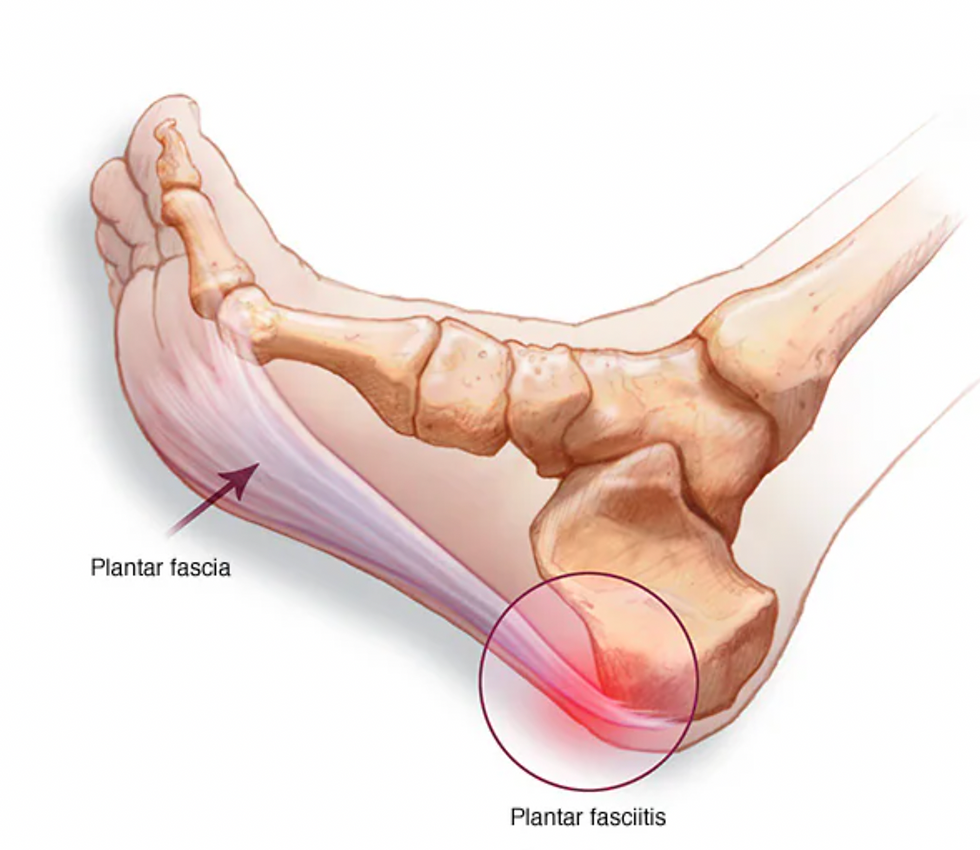Plantar Fascia Pain (Plantar Fascitis)
- Emma Millington
- Aug 20
- 2 min read
Plantar Fascia pain is a condition of the connective tissue that attaches at your heel and forefoot. Other terms include fasciopathy, plantar heel pain or previously called plantar fasciitis.

The plantar fascia is an incredible structure that supports and contributes to the arch of the foot. It’s role includes absorbing force, transferring and propelling when walking, running and jumping.
Plantar Fascia Pain is most likely caused be overload – simply doing too much too soon. Extra factors can make you more susceptible including wearing ill-fitting or poor-support footwear, poor lower limb strength, biomechanical patterns such as excessive knee valgus, or injury to other area altering kinematics and load. E.g. limping on one limb.
Common Symptoms:
- Pain with first steps in the morning or after prolonged sedentary time
- Pain when starting an activity e.g. running
- Aching pain after an activity
- Pain can sometimes improve with warm up, or continued activity
- Feeling of tightness through arch or toes
- Strong stretch or pain when toes are stretched/extended
Putting it simply, when the plantar fascia is loaded beyond it’s capacity, you are at an increased risk of developing pain.
Rehab Journey
Plantar Fascia Pain can be difficult to treat – it’s finding a perfect balance of deloading to allow the structures to ‘settle’ but maintaining enough load to ensure it’s capacity and integrity remains strong. We very rarely would encourage complete rest e.g. crutches, often it is a modified approach to control the load. For example, if you are a runner, it’s common to use cross-training equipment during this rehab process to maintain cardiovascular fitness and strength. The spin bike, leg press, seated weights, balance work, barefoot walking and swimming are fantastic additions to your rehab program.
Sometimes occupational demands can be key drivers to the overuse – are you on your feet consistently, wearing flat or heavy shoes, walking lots? Trades-based workers, hospitality staff, army or police personnel and nurses are common clients we see present with plantar heel pain due to their high occupational demands.
Prognosis
Recovery varies considerably and depends on the nature of the injury.
- Was there a traumatic fall
- Are there any tears within the plantar fascia?
- How long were symptoms present or developing before receiving help
- What is your current load capacity before symptoms start
- How significant are the symptoms?
It is common to get an ultrasound to further investigate the health of the connective tissue and further drive recovery timelines. Typically, timelines could be a few months up to over a year.
Role of Physiotherapy
Physiotherapy support can include a variety of modalities including:
- Development of rehab and strength program
- Advice on footwear, orthotics, heel lifts or supports
- Strapping
- Development of load management plan
- Assistance in modifying other factors including occupational demands
- Soft tissue therapy, massage and stretching
- Communicating with allied-health practitioners such as GPs
Need help managing plantar fascia pain (plantar fasciitis)? Book online or call us on 0430 614 207 for tailored physiotherapy advice and treatment.
.png)



Comments